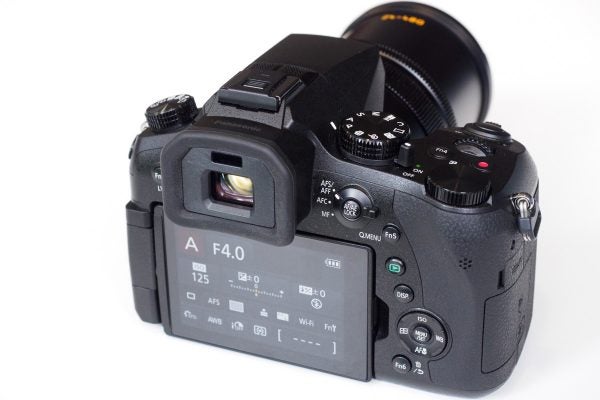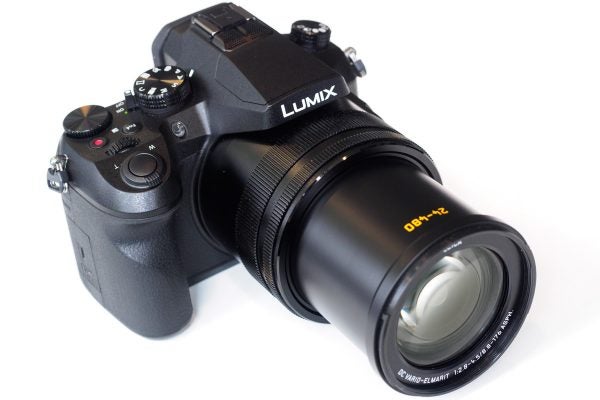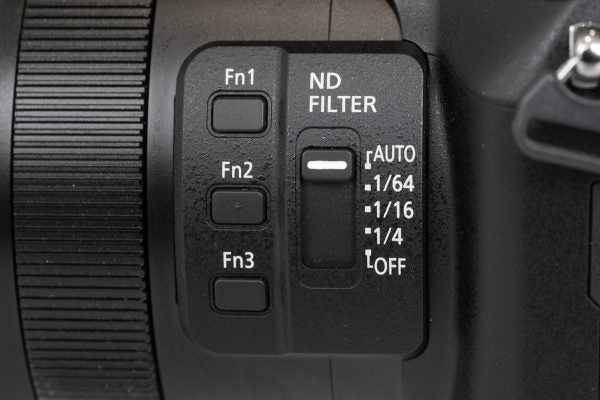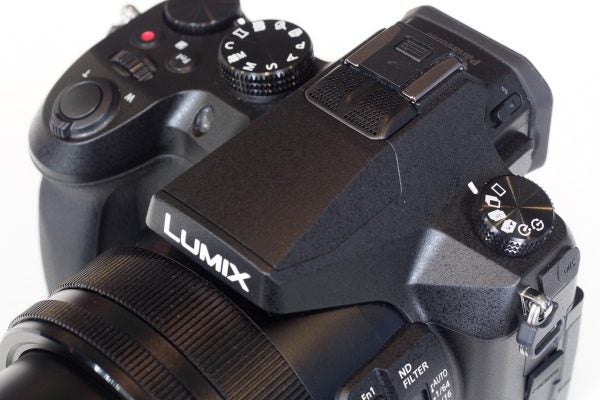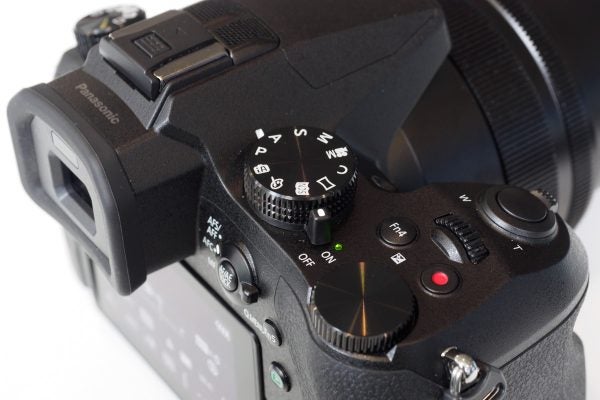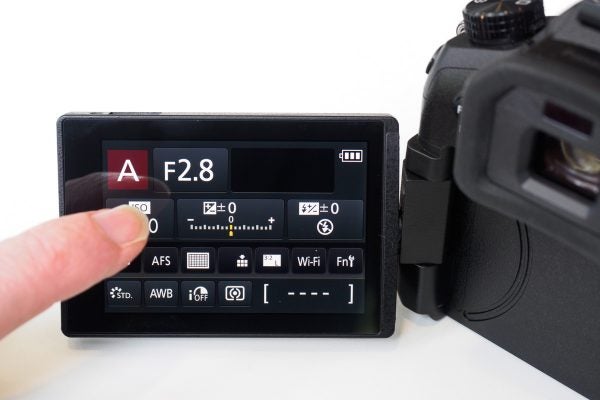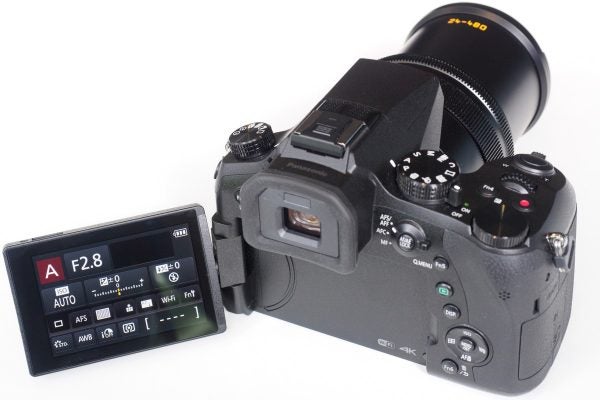Panasonic’s new superzoom bridge camera is designed to be a true stills / video hybrid. Andy Westlake takes a closer look
Panasonic Lumix DMC-FZ2000 review: hands-on first look
Panasonic Lumix DMC-FZ2o00 review: Hands-on First Look
At a glance:
- £1099
- 20-million-pixel 1in CMOS
- 24-480mm equivalent f/2.8-4.5 lens
- ISO 100-25600
- Unlimited duration 4K video recording
A little more than two years ago, Panasonic launched the Lumix DMC-FZ1000 bridge camera, which combined a 25-400mm equivalent f/2.8-4 zoom lens with a 20-million-pixel 1in sensor and internal 4K video recording. For a while it stood apart as the most versatile camera in its class, until the appearance of Sony’s Cyber-shot RX10 III this year with its 24-600mm equivalent zoom. But now Panasonic has revisited the formula, and the result is the Lumix DMC-FZ2000.
With a longer 24-480mm equivalent 20x zoom lens, the FZ2000 is a higher-end model that will supplement, rather than supplant the FZ1000 in Panasonic’s line-up. In fact it’s designed as a genuine video / stills hybrid, with an extremely strong feature set for both. Perhaps its standout feature is the ability to shoot 4K video with no limit to the recording time (almost any other stills camera will stop at 30 minutes). The FZ2000 be available in mid-November with a price around £1099.
Features
On the stills side, the FZ2000’s 20-million-pixel 1in sensor gives a standard sensitivity range up to ISO 12,800, extendable to ISO 25,600. It can shoot at 12 frames per second with focus fixed or at 7 frames per second with autofocus between each shot, with a 30-frame raw buffer. Autofocus employs Panasonic’s proprietary Depth From Defocus technology, which I’ve found to be very effective on its recent cameras.
Naturally Wi-Fi is built in, allowing both image transfer to a smartphone or tablet, and remote shooting with a live view feed and full control over the camera’s settings. Panasonic has also included its standard 2.5mm remote control socket for the DMW-RSL1 electronic cable release. For JPEG shooters there are lots of creative filters in addition to Panasonic’s usual colour modes, while in-camera raw conversion lets you tweak output settings after shooting.
Lens
Key to the FZ2000’s design is its new lens, which is packed with uncommon technologies to support the camera’s video capabilities. Optically it employs 16 elements in 11 groups, with 4 extra-low dispersion (ED) glass elements, 1 Ultra-High Refraction (UHR) glass element, and 5 aspherical elements with 8 aspherical surfaces between them.
Zooming is entirely internal, and uses a coreless DC motor that allows for super-slow, controlled operation in video. The lens groups move along guide poles to keep them perfectly aligned, as opposed to the rotary cam mechanisms commonly employed by stills cameras.
A galvanometer-controlled stepless iris mechanism borrowed from Panasonic’s professional HD cameras should eliminate distracting brightness jumps from movie footage when lighting conditions change. The aperture diaphragm uses 9 blades, and the lens can focus down to 3cm from the front element at wideangle, which is impressive given the sensor size. Hybrid 5-axis image stabilisation combines in-lens optical shake compensation with electronic correction for rotation around the lens axis.
The lens has not just one, but three built-in neutral density filters for shooting at large apertures in bright light, controlled by a switch on the barrel. Each filter blocks two stops of light, so you can select two, four or six stops overall. Alternatively the camera can be set to automatically engage the filters when necessary. There’s also a 67mm screw thread at the front of the lens for attachment of external filters.
Video
With a feature set borrowed wholesale from the top-of-the-range GH4, the FZ2000 has most extensive video specification yet seen in this type of camera. The headline news is the unlimited duration 4K video recording, in either Cinema 4K resolution (4096×2160) at 24 fps or QFHD 4K (3840×2160) at up to 30 fps. This is at an impressive bit-rate of 200Mbps in All-Intra mode, or 100Mbps with IPB compression, and 4:2:0 8-bit colour.
A pair of 3.5mm stereo sockets on the camera’s side allows attachment of an external microphone for sound recording, and headphones for monitoring audio. Peaking and zebra pattern highlight clipping displays are available to help judge focus and exposure. There’s also a video-specific onscreen control panel.
The FZ2000 can also output clean footage to an external recorder over HDMI, at up to 200 Mbps with 10-bit 4:2:2 colour (or 8-bit when simultaneously recording to SD). It includes timecode output for syncing with external audio recorders, and recording can be started and stopped remotely over HDMI. A paid-for software upgrade will even allow V-log L output.
4K photo modes
For a couple of years now Panasonic has concentrated on extending the benefits of 4K video to stills shooters, and the FZ2000 comes with its now-familiar 4K Photo mode. In essence, this allows continuous shooting at 30 frames per second, then makes it easy to extract 8MP stills from the resultant footage. We’ve found this really useful for shooting high-speed, unpredictable action.
Panasonic has also expanded its 4K Post Focus mode. Until now this has allowed refocusing pictures after the event, which is technically clever but not necessarily very useful in practice. However now it’s added a Post Focus stacking feature, which allows you to specify in playback the nearest and furthest points of the scene you’d like to be in focus. The camera can then generate a composite image with extended depth of field. It’s a really interesting idea that could be useful for such things as close-up shooting.
Build and handling
With its DSLR-like styling, the FZ2000 has a large set of external controls, including twin electronic dials on the top plate, and two rings around the lens barrel to control zoom and manual focus. Indeed its control layout is a close match for Panasonic’s SLR-style mirrorless models, such as the G80 announced alongside.
The top plate has a conventional exposure mode dial, which is populated by full set of options for both experienced and novice users. There’s a drive mode dial on the camera’s left shoulder, and a focus mode switch on the back.
By default the focus area is set using the touchscreen (even when you’re using the electronic viewfinder), but this can be assigned to the d-pad instead if you prefer. Indeed the behaviour of almost all of the buttons and dials can be user-customised. This is all a distinct step up from the FZ1000, with a level of external control to match almost any enthusiast DSLR.
One surprising point, however, is that Panasonic isn’t describing the FZ2000 as weather-sealed. This is surprising given that the much cheaper (but smaller-sensored) FZ330 features dust-and-splash resistant construction.
Viewfinder and screen
The FZ2000’s 2.36-million-dot OLED electronic viewfinder is large and detailed, with 0.74x magnification. A generous 20mm eyepoint should make it easier to see for glasses wearers. Panasonic also says that it’s visible from a wider range of viewing angles than the FZ1000’s; in other words, your eye doesn’t have to be so perfectly centred to see clearly into the corners of the frame.
Complementing the EVF is a fully articulated 3in, 1.04-million-dot touchscreen. This can be set to face in almost any direction; up, down, left, right or forwards, making it ideal for shooting at awkward or unusual angles. It can also be folded in against the camera’s back to protect the screen.
First Impressions
It should be pretty clear by now that the FZ2000 looks like it will be very capable indeed. Panasonic has looked at the FZ1000 – which itself is still one of the best models of its type, two years after it was launched – and improved on it in almost every possible way. With a longer lens, much-improved handling, and extensive 4K video capability, the FZ2000 looks like it will be a very strong competitor to the Sony RX10 III. It should also be a useful second camera for GH4 users.
For a long time bridge cameras like this were very much faux-DSLRs, offering similar looks but markedly inferior performance and image quality. But cameras like the FZ2000 could easily replace DSLRs completely for many photographers, especially for travel when there’s no room to carry lots of lenses. We’re really looking forward to getting our hands on one and putting it through its paces in a full review.
Watch our hands-on First Look video from our sister site Amateur Photographer
http://link.brightcove.com/services/player/?bctid=5131451380001





